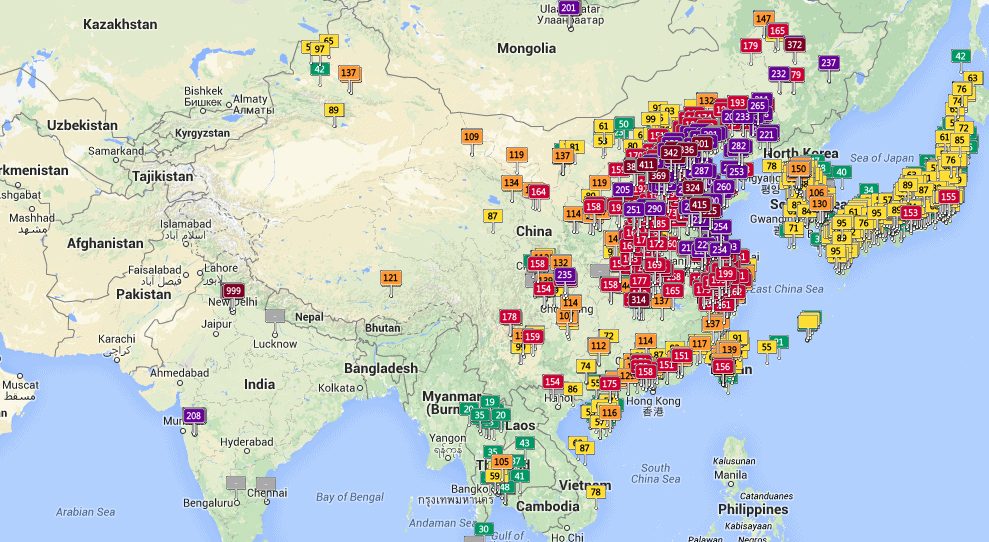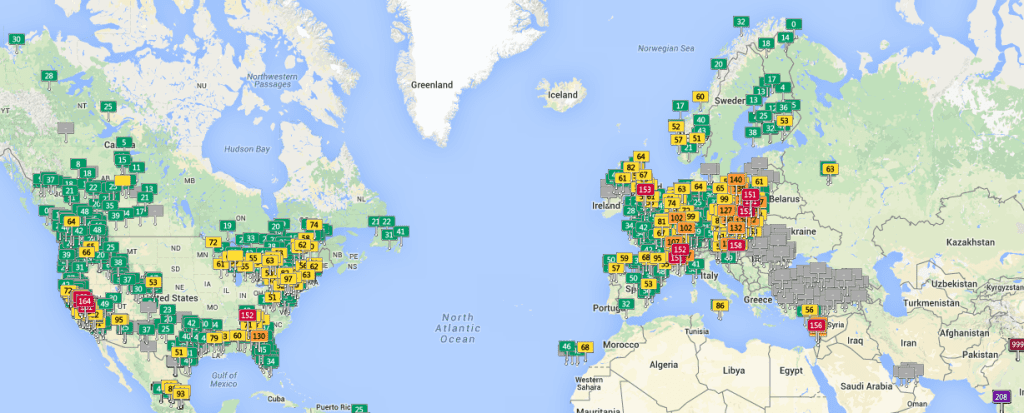Owing to its mass deployment of coal burning plants and the 7.4 million cars that fill its roads, Delhi now proudly stands as the city with the filthiest air in the world, and it’s only getting worse. Many agencies have recently issued health warnings for New Delhi residents, including the most vulnerable such as the elderly and children.
Worst air in the world
The Indian capital has grown quite a lot economically in the past decade. Every day, some 1,200 cars are added, and the city is always bustling with new construction sites, under a smog of particle matter and racket. Delhi’s geography doesn’t help that much either. Located in a bowl-like setting, the city traps all its dirty air when the weather is cool.
So, how bad is it? One of the capital’s neighborhoods Anand Vihar, a residential and business district, has measured PM 2.5 levels —the tiny particulate matter that causes the most damage to human health— at 580. This is the highest in the world! PM 10 levels, the larger particles, sit even higher as the data below shows. Bear in mind these were taken before rush hour. The rest of the city isn’t doing much better either. Air quality fluctuates from “unhealthy” to “hazardous” throughout the city.
Outside of Anand Vihar, the worst offender in Asia on a PM 2.5 basis right now is Wucheng, China, with a PM 2.5 level of 469. The air in Europe and the Americas is considerably cleaner, with the trouble spots in Tel Aviv (PM 2.5 156) and Tulare, California (PM 2.5 161).
Local authorities introduced various measures to control the situation like public transportation running on compressed natural gas (CNG). Yet, most of these measures happened in 2001. Since then, the government seems to be unable to keep up with the city’s expansion and growing needs. New Delhi has amassed more vehicles than the total number in the three other large cities of the country, namely Mumbai, Kolkata and Chennai.


It’s not only cars, power plants and construction work that’s ruining Delhi’s air, though. The System of Air Quality Weather Forecasting and Research (SAFAR), an air quality monitor in the capital linked the peaking of PM 2.5 to burning of agriculture waste in the bordering states of Punjab and Haryana.
“The winds blowing towards Delhi from the northwest are passing by the area where a lot of agricultural waste is being produced. If the capital gets colder in the coming days, the smog situation will intensify,” a SAFAR report said.
The pollution levels in the capital have also triggered various lung diseases in the city.
“There has been a sudden increase in the number of asthma patients in the past few weeks. Though we expect such cases only in mid-December when the cold weather intensifies in the city, many people have visited our clinic complaining breathing troubles, especially children, babies and senior citizens. Cases of heart and lung infections have also shot up,” said Dr V K Saxena who runs a clinic at Rohini, North-west Delhi.
Pollution is a wide spread issue across the whole of India, be it rural or urban setting. Comparing crop yields in 2010 to what they would be expected to be if temperature, rainfall and pollution remained at their 1980 levels, researchers showed that crop yields for wheat were on average 36%lower than they otherwise would have been, while rice production decreased by up to 20%. In some higher population states, wheat yields were as much as 50% lower.







